Today, before we left for Lubeck, we had a quick walk down to the beach that was supposed to be only fifty metres away. It might have been only fifty metres as the crow flies but for us it was nearer a kilometre. There was a small marina, some very ugly modern blocks of flats and nice little sandy beach sitting on the Baltic. This is obviously a popular spot for German holiday makers, but, as I mentioned yesterday, as far as we could see there was not a single foreigner, other than us, at the vast Camperstop.
When we arrived at Damp Camperstop yesterday it consisted of a series of large grass fields, with one of them having some hardstanding. We headed for a lovely empty corner of one field and wondered to ourselves why nobody else had parked in this beautiful spot. This morning we found out. I fired Basil up, put him in gear, released the clutch and nothing. At first I was a little confused. We were on a perfectly flat piece of grass so why wasn’t Basil moving. I got out and immediately saw that Basil’s lardy back end had sunk several inches into what turned out to be very soft ground.
We tried putting things under the front wheels with no success. By this stage gallant large German men were running from all directions to help us. There was some discussion in a mixture of German and English about what to do and the German’s decided they would push. Sure enough their combined power quickly had Basil out of his hole and on the road to Lubeck.
Being a Sunday our journey to Lubeck, even though we had to pass through the large town of Kiel, was smooth and rapid. I have to reign Basil in on the empty Autobahns because although some of them have no speed limit for cars Basil is strictly speaking limited to 62 mph (100 kph).
We parked up on a Stellplatz only 500 metres from the city centre (53.871636, 10.678944). It is normally only €6 for 24 hours but only Sunday its free!!
After a quick lunch we ambled along to the Tourist Information Centre and picked up a map detailing a recommended walking tour for Lubeck.

The Town Gates with the Salt Warehouses and St. Peter’s Church in the background
Lubeck is a UNESCO World Heritage site. It’s fame and fortune stem from it being one of the founders and leading lights of the Hanseatic League. It was where the league met and it was the abiter of Hansa law.
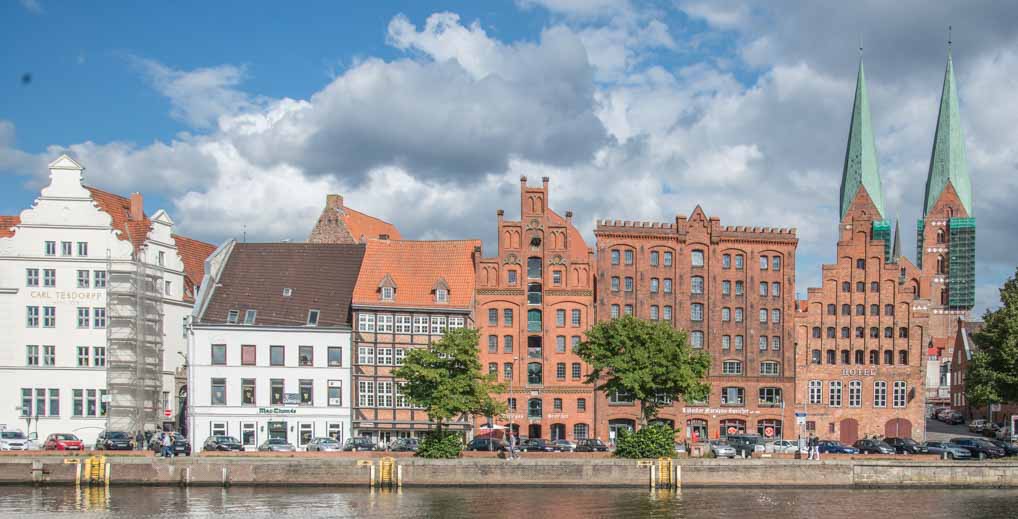
Lubeck Waterfront with Marienkirche on the right in the background
I have mentioned the Hanseatic League several times in previous posts. It was a transnational trading group formed in the 13th century, mainly among cities around the Baltic, but also including agents in England and elsewhere. It was enormously powerful, issuing ultimatums to sovereign states and even had it’s own fleet to enforce its rules. In Lubeck it also guaranteed mercantile independence from the Catholic Church.

Salt Warehouses
The result is that Lubeck has an incredible collection of buildings from the twelfth century onwards, with its architecture being the driving source behind the Brick Gothic style which I have mentioned endlessly on our various stops near the Baltic.
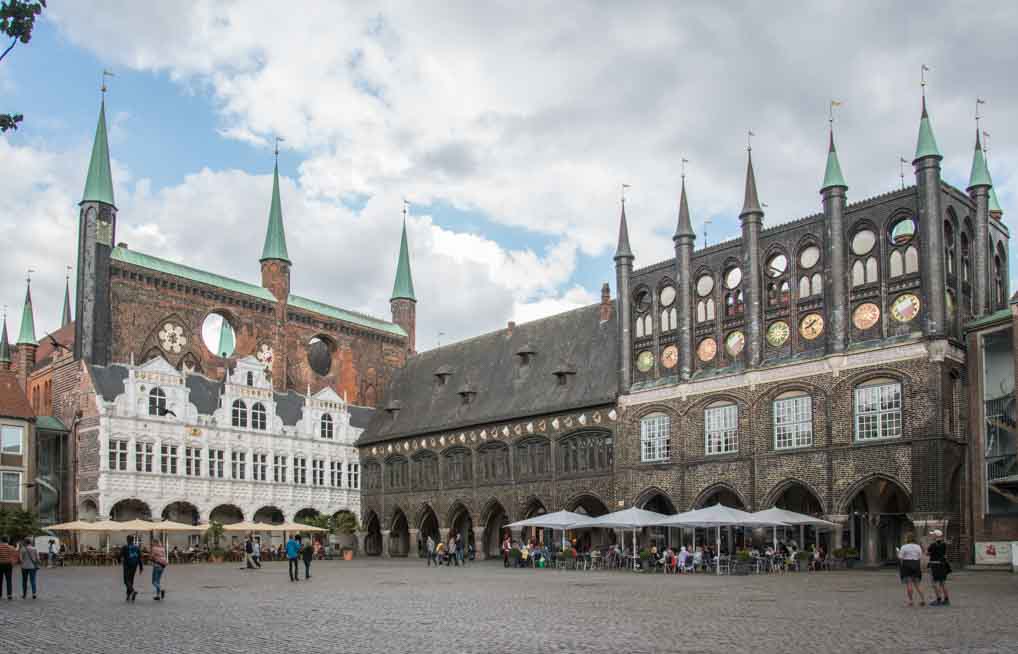
Rathaus (Town Hall)
Our walk took us past the Cathedral and the enormous brick Marienkirche, a church built by the merchants of Lubeck to upstage the Cathedral. The Marienkirche is rather plain inside but it has the largest brick vaults in the world and is the third biggest church in Germany.

The Cathedral
Of the many lovely buildings some of the most unique are the alms houses which were build in tiny alleys and courtyards all over the city. Many of them are still charitable.
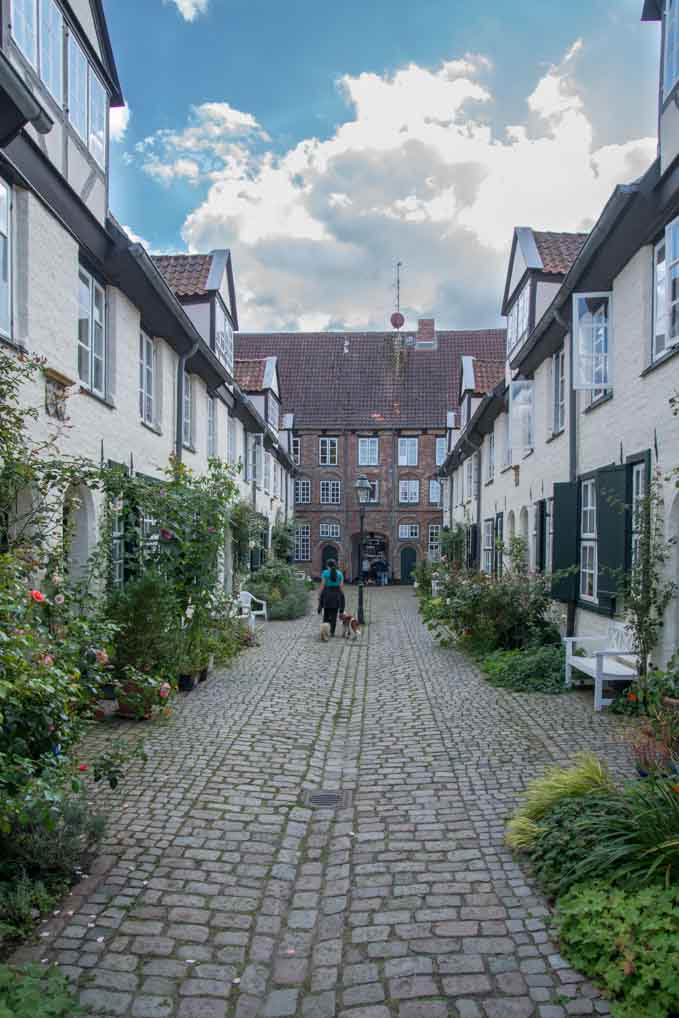
Alms Houses
Lubeck can also claim Germany’s oldest hospital, the Heiligen-Geist (Holy Ghost) which was build in about 1260.
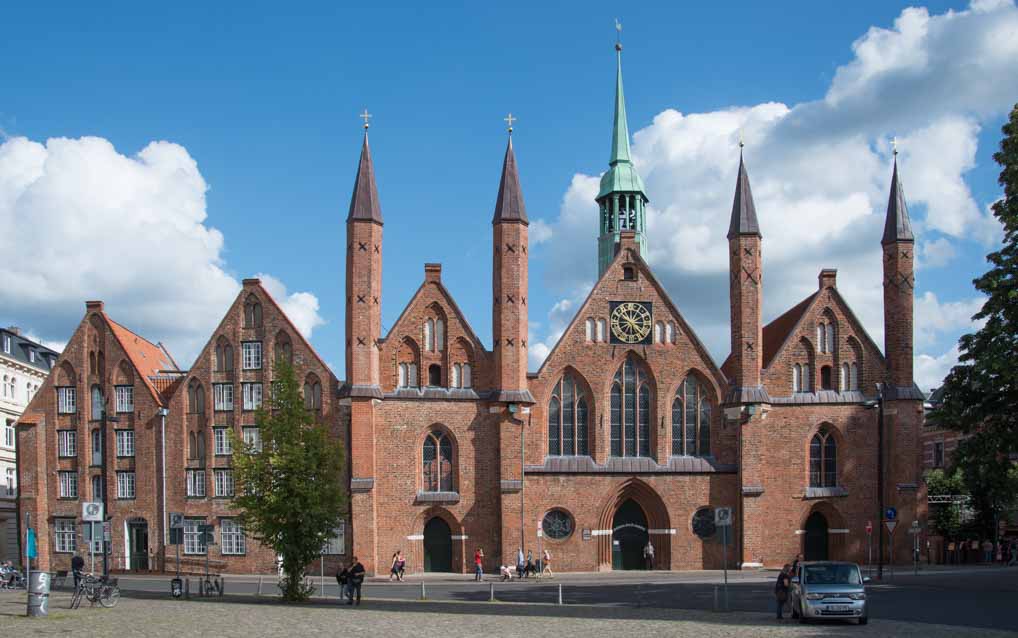
Holy Ghost Hospital
Lubeck was lucky in the Second World War. It was bombed without too much damage, but was scheduled to be completely destroyed by the Allied Air Forces. Fortunately, apparently tipped off as to the proposed raids, a Swiss diplomat nominated Lubeck to be the entry port for Red Cross parcels and Lubeck was spared. Some damage was done to the Marienkirche and some bells that fell to the floor during a raid have been left there as a reminder.
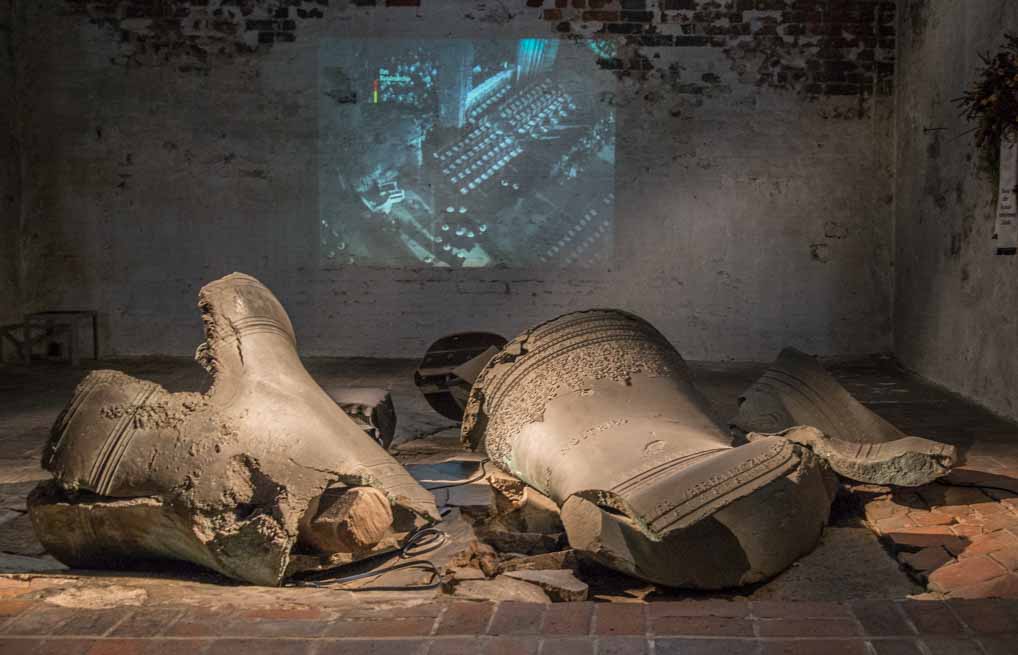
Bells inside Marienkirche where they fell during an RAF raid
As a result of its power Lubeck is larger than any of the other Hanseatic League Towns we have looked around and so feels a little more spread out than more compact towns such as Torun in Poland. However, although the major pieces of architecture are impressive it is more the lovely everyday buildings which make the city in my opinion. As you walk around you stumble across, convents, churches, alms houses, merchants houses and many other buildings any one of which would take pride of place in a lesser town.
I have solved the riddle of what people have been saying to me since we arrived in Northern Germany. Instead of saying Guten Tag or Guten Morgen they say “moin” pronounced “moyn”. It is a low German word used in the north only, so now I won’t look so stupid when the next person says it to me. Apparently the correct response is “moin” – easy peasy!
Tonight, providing the weather holds out, we are going to sample our first German Beer and I’m hoping a sausage or two. We will wander along the river to see what we can find, but sausages with a vegetarian option for Sarah would be ideal. Perhaps I am asking too much.
